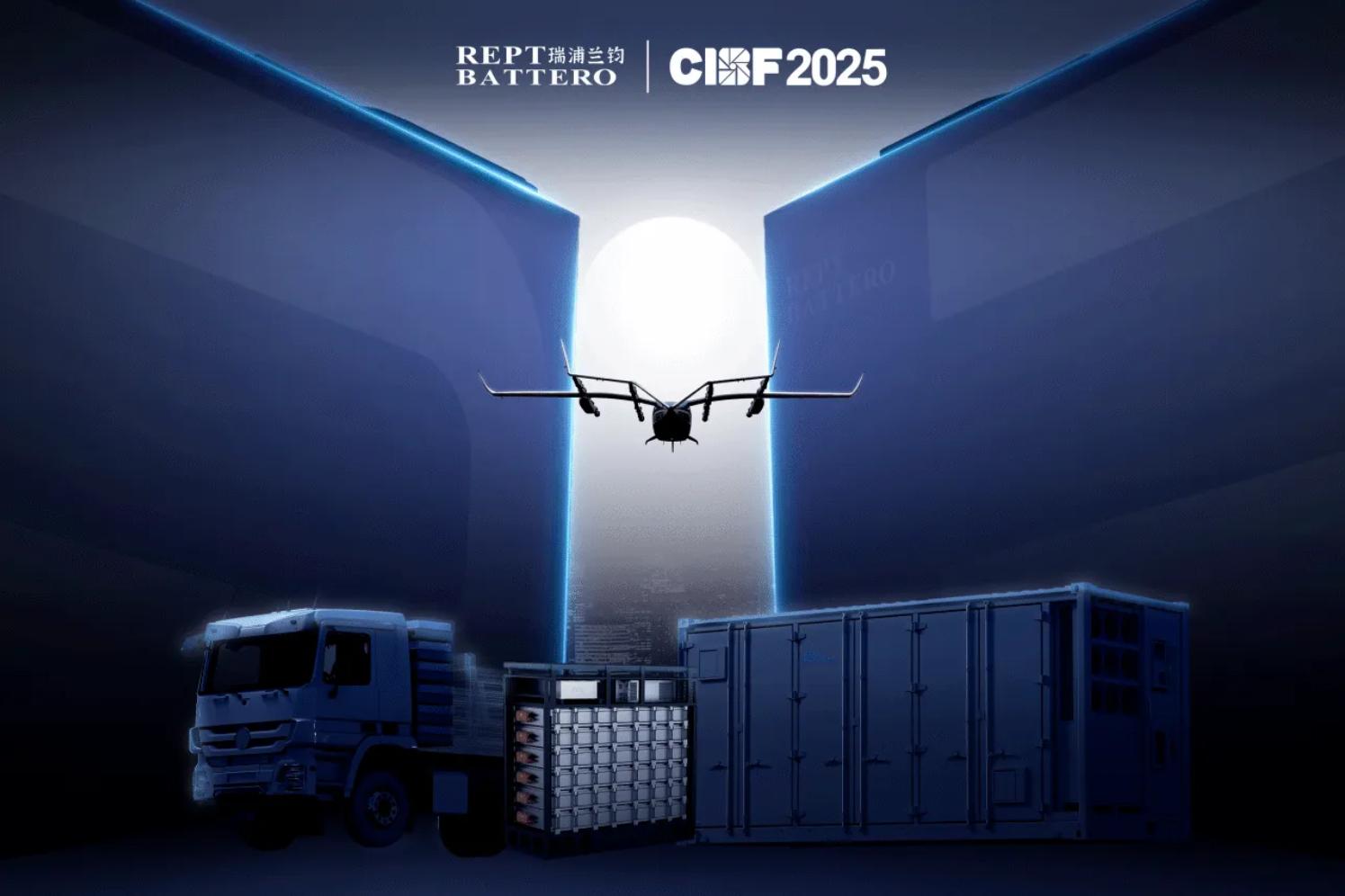
From low-altitude aviation to commercial power and energy storage, REPT BATTERO unveils groundbreaking solutions driving the future of clean energy.
The 17th Shenzhen International Battery Technology Exchange/Exhibition (CIBF2025) has commenced, with REPT BATTERO taking center stage. The company unveiled a diverse lineup of battery products tailored for three core scenarios: low-altitude flight, commercial power, and energy storage, reinforcing its leadership in new energy innovation.
Designed specifically for electric vertical takeoff and landing (eVTOL) aircraft, the Wending eVTOL ultra-high nickel battery cell delivers unprecedented performance:
- Single-cell energy density: 310 Wh/kg
- System energy density: 270 Wh/kg (surpassing automotive-grade benchmarks)
- Range: Up to 300 km
Jupiter 324Ah Pro Battery Cell
- Energy density: 198 Wh/kg
- Cycle life: >10,000 cycles with zero degradation in first 800 cycles
- Service life: >13 years
S-Box Battery Cluster
- Energy density: 145 Wh/kg
- Design lifespan: 8 years / 2 million km
- Modular configurations for diverse transport needs:
- Short-haul: 450 kWh swappable packs (2-branch, 2-string) reduce charging frequency.
- Mid-haul: 680 kWh capacity (3-branch, 2-string) enables intercity electric heavy trucks.
- Long-haul: Upcoming 800 kWh ternary system for extended-range heavy transport.
Wending 392Ah Cell
- Fastest mass-produced large-format storage cell
- Energy density: 415 Wh/L | Cycle life: >12,000 cycles
- Efficiency: >95% (0.5P) | High compatibility with existing 314Ah infrastructure
Wending 587Ah Cell
- Energy density: 430 Wh/L | Cycle life: >10,000 cycles
- Efficiency: >94.2% (0.5P)
- Safety: Thermal runaway thresholds match 314Ah series, ensuring reliability.
By pioneering solutions across aviation, transportation,and grid-scale storage, REPT BATTERO demonstrates its comprehensive R&D capabilities in next-generation energy systems. The company remains committed to accelerating the global transition to carbon neutrality through continuous innovation.
Next:How to Reduce Lithium Battery Self-Discharge During Storage
Previous:How to Handle a LiFePO4 Battery Leak: Causes, Risks, and Solutions